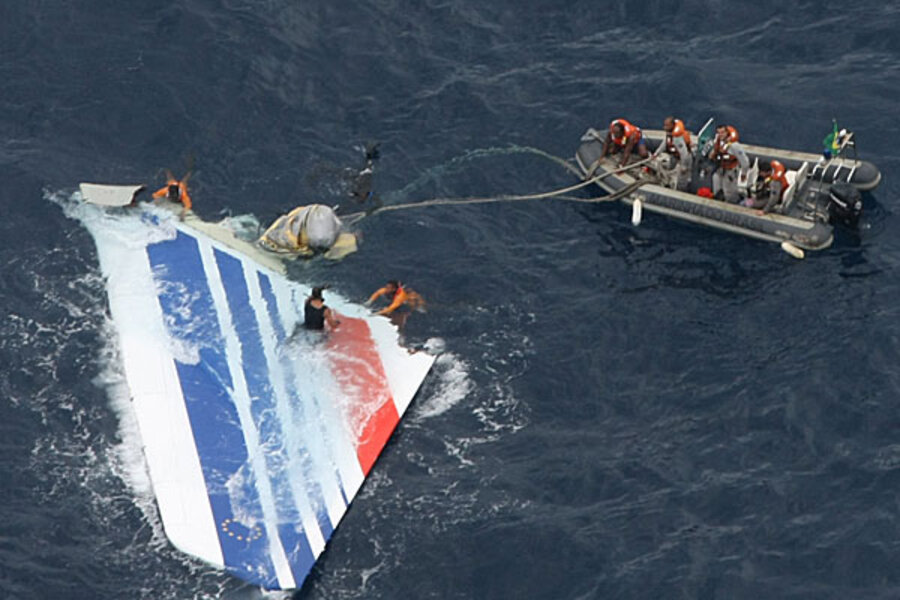Air France Flight 447: Bad sensors, pilot error contributed to crash
Loading...
| Le Bourget, France
The pilot of an Air France jet that crashed into the Atlantic in 2009 nosed it upward during a stall — instead of downward, as he should have — because of false data from sensors about the plane's position, the father of a victim said.
A final report on the crash of Flight 447 also points to pilot error, according to families of victims who were briefed on the conclusions before their public release later Thursday.
France's BEA air accident investigation agency has spent three years digging into what caused the frenetic end of Flight 447. The plane flying from Rio de Janeiro to Paris plunged into the ocean during a nighttime thunderstorm, killing all 228 people aboard in Air France's deadliest ever crash.
RECOMMENDED: Four ways to help pilots avoid turbulence
Robert Soulas, who lost his daughter and son-in-law in the crash, says investigators said the flight director system indicated the "erroneous information" that the plane was diving downward, "and therefore to compensate, the pilot had a tendency to pull on the throttle to make it rise up."
Investigators had known the pilot unexpectedly nosed upward during the stall, instead of down. Soulas' comments are the first indication of why the pilot made that decision.
A basic maneuver for stall recovery, which pilots are taught at the outset of their flight training, is to push the yoke forward and apply full throttle to lower the nose of the plane and build up speed. But because he thought the plane was diving, he nosed up.
The report is also expected to elaborate on why the pilot nosed upward at such a sharp angle, and why the two co-pilots in the cockpit at the time appeared to ignore dozens of stall warnings going off in the 4½ minutes before the plane slammed into the ocean.
Barbara Crolow, a German who lost her son in the crash, said she was "disappointed" because she felt the report focuses too much on pilot error.
"I think this is not enough. ... There have been other reasons as well and they ignored them," she said.
Pilot Gerard Arnoux defended the pilots' actions, saying they were doing what they had been taught to do. "A normal pilot on a normal airliner follows" the signals on the flight director system, which tells them to go left, right, up or down, he said.
He noted that a European directive last year modified procedures to tell pilots to ignore the signals if they lose data on the plane's speed.
A preliminary report released last July described a confused Air France cockpit crew getting incoherent speed readings from faulty sensors (pitot tubes), but it didn't draw a conclusion on what caused the crash.
It said the crew, who lacked the proper training to head off high-altitude disaster, flew toward it instead, with wrong-headed maneuvers, no task-sharing and perhaps unaware their flight was about to end in the Atlantic Ocean. Everyone aboard the plane was killed.
The BEA's findings last year raised worrisome questions about the reactions of the two co-pilots as the A330 went into an aerodynamic stall, and their ability to fly manually as the autopilot disengaged. Broader concerns were raised about training for pilots flying high-tech planes when confronted with a high-altitude crisis.
The report included a study of the plane's black box flight recorders, uncovered in a costly and extraordinarily complex search in the ocean depths.
In a separate French judicial investigation still under way, Air France and Airbus have been handed preliminary manslaughter charges.
RECOMMENDED: Four ways to help pilots avoid turbulence
___
Catherine Gaschka in Le Bourget contributed to this report.
Copyright 2012 The Associated Press.







